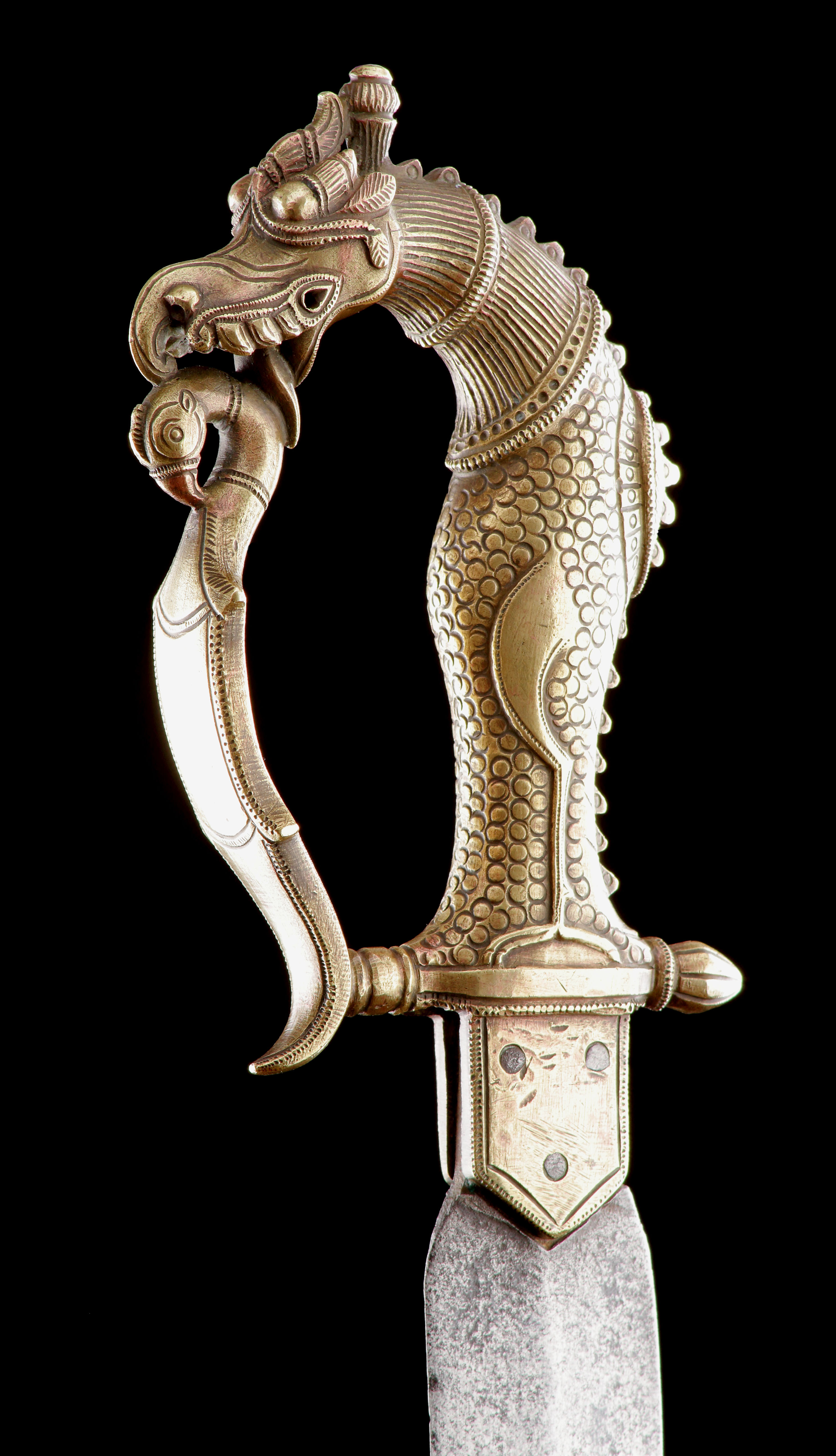Katthi (dagger)
Tanjore (India)
Late 18th – early 19th Century
Overall 395mm
The hilt of this South Indian katthi 1 (the Tamil word for dagger) is modelled as a yali, a benevolent demon, popular in South India on arms, armour, and buildings for protective reasons. The hilt is made from copper-alloy and the head of the beast forms the large pommel, which has a sculpted crest with bulging eyes. The ferocious mouth gapes beneath a long, curling nose and the beasts tongue licks the knuckle-guard which terminates in the form of a bird. The body of the beast is scaled with moulded legs and a crest running along its back. The steel blade is large and of recurved form.
An important correlative sword sits in the private collection of the Raja of Tanjore and is published by Elgood 2 in his important work on South Indian arms and armour. It is dated by him as seventeenth or eighteenth century. Elgood also published details of a dagger that can be used as another analogous example, with a silver hilt 3 , also from the collection of the Raja of Tanjore and dated as being from the second half of the seventeenth century. A further gilt-example of the same form was sold by us TEFAF 2024, and published in Sultans, Eunuchs & Sikhs, Runjeet Singh, 2024, no.3, p.12-15.
Provenance
The Roy Elvis (1944-2022) collection
Literature
Roy Elvis, The Hindu Warrior, 2020, pp.248, fig.no.198, cat.no.D44.
_________________________________________
1 Katthi is the word for dagger in the South Indian languages of Kannada, Tamil and Malayalam, and chaku a more colloquial term used in Karnatka. (from personal correspondence with Nidhin Olikara).
2 Robert Elgood, Hindu Arms and Ritual – Arms and Armour from India 1400-1865, 2004, pp.99, fig.8.64.
3 IBID, pp.175, fig.no.16.26.




